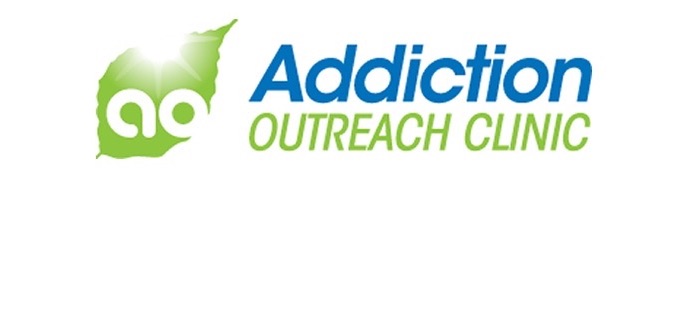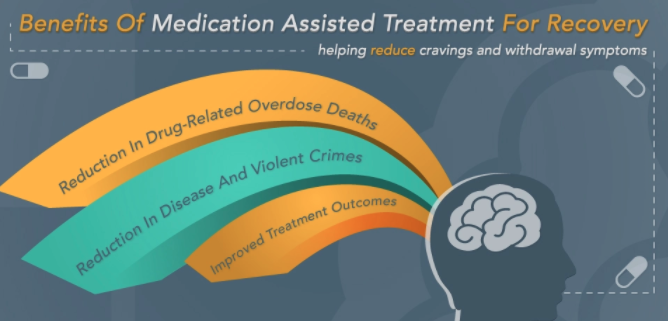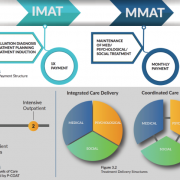Addressing Opioid Addiction Medication-Assisted Treatment (MAT) Fears
As you or your loved ones research different options opioid addiction treatment, some questions may come to light. For example, are you just replacing one pill for another? This is a great question and the following describes four of the top fears that we have heard patients and their caregivers offer when considering medication-assisted treatment (MAT).
Medication-Assisted Treatment (MAT) is the use of medications, in combination with counseling and behavioral therapies, to provide a “whole-patient” approach to the treatment of substance use disorders. Research shows that a combination of medication and therapy can successfully treat these disorders, and for some people struggling with addiction, MAT with a drug addiction specialist can help sustain recovery. (Source: Samhsa.gov)
For more information on MAT, please see our previous blog post, Understanding Medication-Assisted Treatment (MAT) for Opioid Addiction.
A physician, educator, and addiction medicine expert, Sybil Marsh MA MD FASAM Department of Family Medicine and Community Health Case Western Reserve University/UHCMC compiled responses to the top four fears in her paper on Medication-Assisted Treatment (MAT) for Opioid Use Disorders. Supporting information and explanations are included from the Substance Abuse and Mental Health Services Administration (SAMSHA) and the National Institutes of Health (NIH) as indicated to enhance the readers’ learning and understanding.
Fear #1: Medication will eventually replace rehabilitation as the treatment of choice for opioid addiction, in other words “a pill for every ill.”
While MAT may feel like just providing another pill to address opioid addiction, it is in fact a useful tool to facilitate opioid addiction treatment. Medication helps the patient participate and focus on the most important part of treatment, which is behavioral treatment and applying the lessons learned without being overpowered by cravings and withdrawal symptoms.
A common misconception associated with MAT is that it substitutes one drug for another. Instead, these medications relieve the withdrawal symptoms and psychological cravings that cause chemical imbalances in the body. MAT programs provide a safe and controlled level of medication to overcome the use of an abused opioid. And research has shown that when provided at the proper dose, medications used in MAT have no adverse effects on a person’s intelligence, mental capability, physical functioning, or employability.
Fear #2: Medication will distract from the difficult work needed for recovery from opioid use disorder, and makes it too easy to be “clean.”
There is nothing “easy” about opioid rehab. The medication used in MAT makes withdrawal safer and more humane. Medication provides a safety net so the patient can take risks to do the “difficult work”, which happens in counseling to change behaviors that have led to opioid addiction.
Fear #3: Medication will continue an existing opioid addiction.
While it is possible for a physical dependence to the medication prescribed to occur, the addiction behavior, such as social withdrawal, or diminished coordination, decreases during the MAT process. MAT addresses co-occurring use disorders, or the coexistence of both a mental health and a substance use disorder, through medication and behavioral counseling.
Fear #4: Medication will cause new substance addictions.
The medications used in MAT reinforce the opioid addiction recovery process rather than providing another addiction.
Methadone, buprenorphine, and naltrexone are used to treat opioid dependence and addiction to short-acting opioids such as heroin, morphine, and codeine, as well as semi-synthetic opioids like oxycodone and hydrocodone. Below are descriptions of common MAT medications according to SAMSHA:
Methadone
Methadone tricks the brain into thinking it’s still getting the abused drug. In fact, the person is not getting high from it and feels normal, so withdrawal doesn’t occur. It is usually given in liquid form or a wafer.
Buprenorphine
Like methadone, buprenorphine suppresses and reduces cravings for the abused drug. It can come in a pill form or sublingual tablet that is placed under the tongue. Like opioids, buprenorphine produces effects such as euphoria or respiratory depression. With buprenorphine, however, these effects are weaker than those of full drugs such as heroin and methadone. Buprenorphine’s opioid effects increase with each dose until at moderate doses they level off, even with further dose increases. This “ceiling effect” lowers the risk of misuse, dependency, and side effects. Buprenorphine is also combined with naloxone, to prevent abuse and misuse of this medication if it is injected.
Naltrexone
Naltrexone, which is injected, works differently than methadone and buprenorphine in the treatment of opioid dependency. If a person using naltrexone relapses and uses the abused drug, naltrexone blocks the euphoric and sedative effects of the abused drug and prevents feelings of euphoria. Naltrexone may not stop drug cravings. It may be a good choice if you are completely past withdrawal and highly motivated to stay in recovery.
(Source: Samsha.gov)
The American Society of Addiction Medicine List of Trade Names for Common MAT medications:
- Suboxone® and Suboxone® film are combination of buprenorphine and naloxone
- Subtex® is buprenorphine alone
- Vivatrol® is a long-acting injectable form of naltrexone
Suboxone® MAT treatment is often found to be the best treatment course for outpatient opioid rehab.
How long must a patient experience MAT?
People may safely take medications used in MAT for months, years, several years, or even a lifetime. Plans to stop a medication must always be discussed with a doctor.
Addiction is considered a disease by the National Institutes of Health (NIH), National Institute on Drug Abuse (NIDA). Just like with many other diseases, medications are sometimes required for a period of time, which can be an indefinite period for some people, to help manage a condition. “Drugs change the brain in ways that make quitting hard, even for those who want to. Fortunately, researchers know more than ever about how drugs affect the brain and have found treatments that can help people recover from drug addiction and lead productive lives.” (Source: NIH)
MAT Effectiveness
In 2013, an estimated 1.8 million people had an opioid use disorder related to prescription pain relievers, and about 517,000 had an opioid use disorder related to heroin use. MAT has proved to be clinically effective and to significantly reduce the need for inpatient detoxification services for these individuals. MAT provides a more comprehensive, individually tailored program of medication and behavioral therapy. MAT also includes support services that address the needs of most patients.
The ultimate goal of MAT is full recovery, including the ability to live a self-directed life. This treatment approach has been shown to:
- Improve patient survival
- Increase retention in treatment
- Decrease illicit opiate use and other criminal activity among people with substance use disorders
- Increase patients’ ability to gain and maintain employment
- Improve birth outcomes among women who have substance use disorders and are pregnant
(Source: Samsha.gov)
If you have questions about the process of medication-assisted treatment, please call AOC at 330-259-4849, or e-mail us for more information or to schedule an appointment.
Addiction Outreach Clinic (AOC) provides an outpatient opioid addiction treatment program that includes Suboxone® medication-assisted treatment to prevent cravings and withdrawal symptoms combined with a once-a-month behavioral counseling session to support our patients’ recovery efforts and help them get their lives back. Since 2007, AOC has helped thousands of patients on their path to recovery.










Wow, I never heard of medication-assisted recovery before but it does look very promising, especially how it’s basically helping a patient have as little chance of relapse as possible. A friend of mine once expressed to me her desire to come clean of marijuana. I should probably suggest this kind of treatment for her.
Thank you for your comments, Brittney. Addiction Outreach Clinic specializes in opioid addiction. We provided medication assisted treatment for patients suffering from addiction to drugs like heroin and medications like oxycontin. Best wishes to you and your friend.